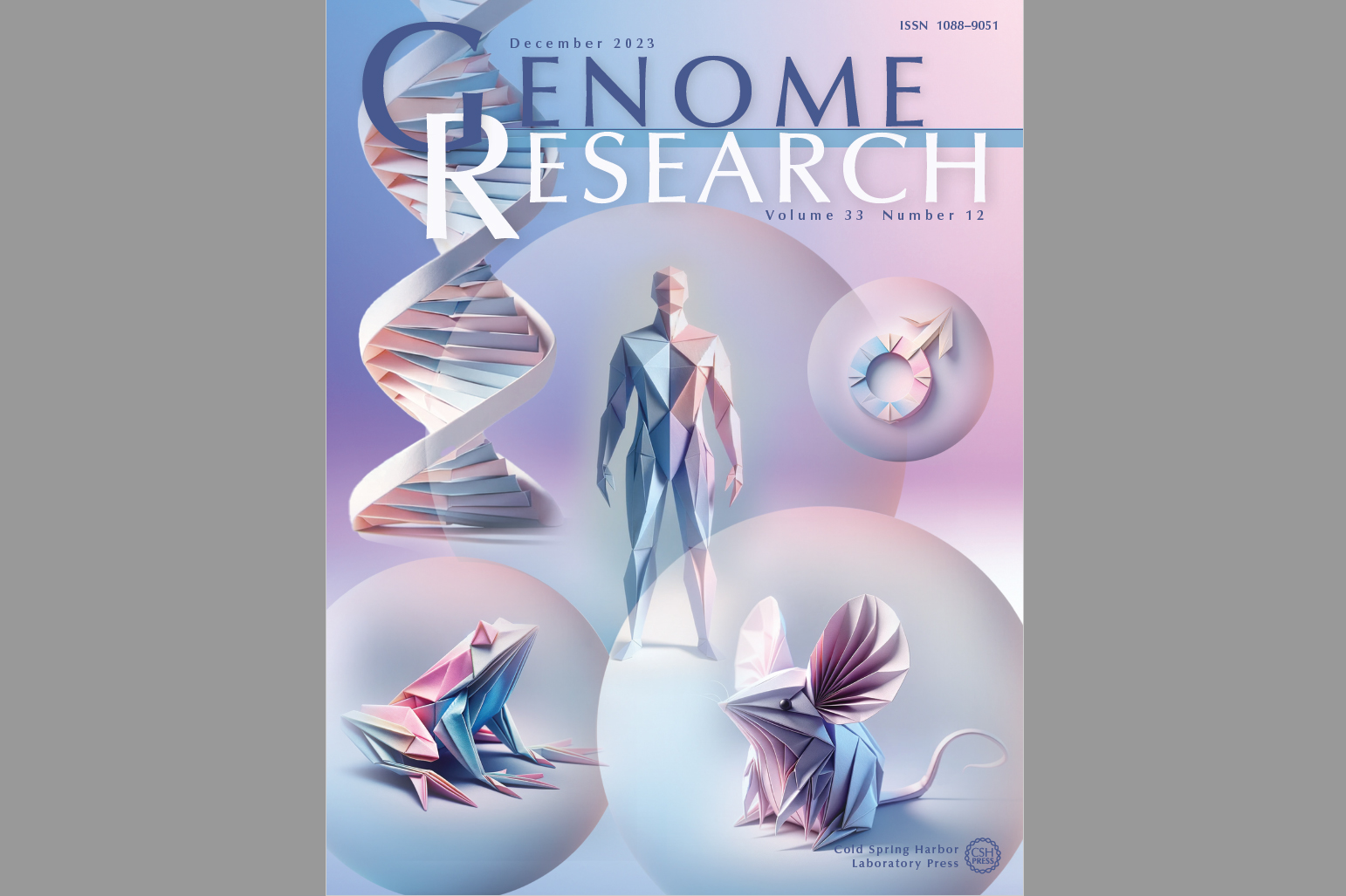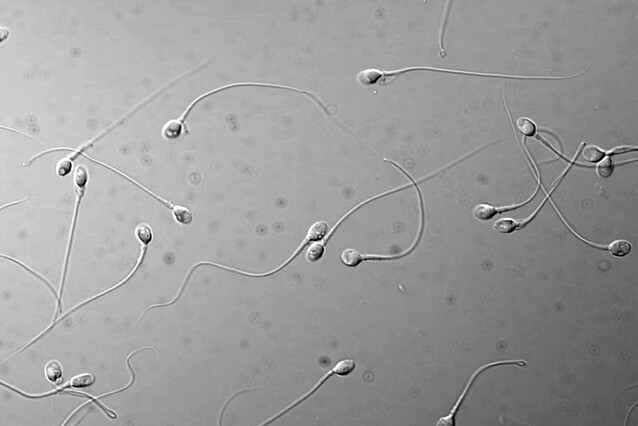Sperm's creative approach to genome packing
A team of researchers around IMP Scientific Director Jan-Michael Peters investigated DNA folding in a highly specialised cell type: sperm. Their study, published in the journal Genome Research, reveals a distinct three-dimensional genome organisation that folds DNA very densely, setting vertebrate sperm apart from other cell types. The findings prompt further exploration into the role of certain proteins in shaping the sperm genome.
Textbook illustrations of cells often show a neatly arranged assemblage of organelles in a vast empty space. In reality, cells are teeming with a constant traffic of molecules that need to be regulated and organised to keep the cell healthy. DNA is among the longest molecules within cells and must be contained and organised for cellular processes to run normally.
In complex organisms, the genome is folded and fits in the cell nucleus. Approximately two metres of DNA must be neatly packed into this minuscule organelle. In the lab of IMP Scientific Director Jan-Michael Peters, scientists have studied the mechanisms of DNA folding for years.
In normal somatic cells, DNA folding occurs at multiple levels: the double-helix is wrapped around molecular organisers, forming a thicker string of ‘chromatin’. This fibre can then be folded into loops by cohesin, a molecular motor, with the help of CTCF, a protein, resulting in structures called ‘topologically associating domains (TADs)’. Over longer distances, chromatin is separated into compartments. Together, these structures form highly organised and regulated chromosomes that fit into the restricted nuclear space.
Is cohesin’s packaging performance good enough for even smaller volumes? Gregor Jessberger, a recent graduate of the Peters lab, and his co-authors tackled this question by looking at a cell type with one of the smallest of nuclei: sperm. Their findings are now published in the journal Genome Research.

Packaging the sperm genome for transport
Sperm are the most mobile of human cells: their minute, streamlined head and long, flexible tail enables them to swim along the female reproductive tract. The paternal genome is densely compacted when sperm is formed, and de-compacted after fertilisation, once sperm and egg have fused. While these processes are essential for fertilisation and early development, they are not fully understood.
“We analysed the genome architecture of sperm in Xenopus, a classical frog model, to figure out whether cohesin plays the same role in shaping genome organisation in these cells as it does in other cell types. We found no evidence of cohesin-mediated structures such as TADs, possibly because specialised sperm proteins called protamines fold the sperm genome,” explains Jessberger.
When the researchers expanded their investigation to mammals, they made mixed observations: in human sperm, they found no TADs. In mice sperm, however, cohesin’s work was detectable, with the researchers observing similar structures as in somatic cells. A team of scientists led by Oliver Rando at the University of Massachusetts investigated this curious difference and found that these data may result from chromatin contaminations. They hypothesise that the sperm genome of mice, like that of humans and frogs, is not folded into TADs. Their study was published in the same issue of Genome Research.
“Our studies suggest that DNA in vertebrate sperm is packaged differently from other cells, possibly in a denser arrangement to facilitate sperm swimming,” says Jan-Michael Peters. “The exact mechanisms through which protamines – and possibly other proteins – package the sperm genome are an important black box that remains to be addressed in future studies.”
Original publication
Gregor Jessberger*, Csilla Várnai*, Roman R Stocsits, Wen Tang, Georg Stary, Jan-Michael Peters: “Cohesin and CTCF do not assemble TADs in Xenopus sperm and male pronuclei”. Genome Research (2023). DOI: 10.1101/gr.277865.123.
*co-first authors
